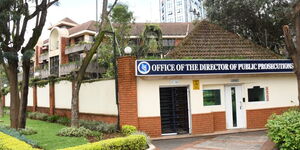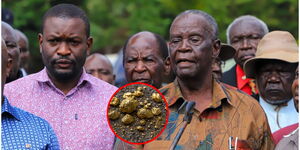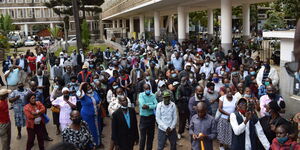Whenever you look at a safari package offering you an “unforgettable trip” to enchanted places in Kenya, chances are they actually mean it quite literally.
Voted as one of the best tourist destinations in the world, Kenya has an array of sites that have been described as breath-taking.
On the other hand, those looking to test their mettle against mythical legends also have places to visit that have been known to send cold chills down to the very bones.
Below are five sites in Kenya that tourists have described as haunted and scary, yet exciting.
Menengai Cave
The extinct volcano offers striking views of Lake Nakuru and Lake Bogoria.
Although the volcano is dormant, there are hot spots on the floor of the crater where steam jets sometimes fill it with vapour.
However, its stunning beauty is matched by its dark & wild side that has locals convinced to be the work of evil spirits.
People have lost their lives while others have disappeared, never to be seen again, while others have strayed and lost direction in the cave, only for them to be found hours later unable to explain how they lost their way.
This has earned the crater the name ‘Kirima kia ngoma’ which means the place of devils in Kikuyu.
The are also mythical and unsupported claims of some people seeing the devil riding a motorcycle. There is also the widespread allegation of a ‘flying umbrella’ that normally appears whenever it rains.
Historians say the place was a scene of violent battles between the Laikipia Maasai, who did not recognise the authority of the Laibon, the spiritual leader of the Maasai, against the Ilpurko Maasai.
In one battle, it is said, the Laikipia warriors were thrown into the caldera, with local folklore claiming that the spirits of the warriors haunt the place to date.
The Haunted Pillar of Mbaraki
Standing 50 feet tall, the haunted pillar is considered to be the second oldest monument (estimated at 300 years), after Fort Jesus.
Historians and archaeologists have never been unable to agree on what purpose it served in the ancient world.
Some suggest it could have been an early form of the lighthouse while others insist it may have been used for other purposes.
Local folklore tells of an Arab spirit that resides within its walls which possesses powerful magical healing abilities.
Women are known to travel from far to perform fertility rituals at the base of the pillar in the hope of bearing children. The sick also leave offerings here in the belief they will get cured.
Lake Simbi Nyaima
In the Luo dialect it means "the sunken village", the "Simi Nyaima".
Dubbed the healing lake, stories surrounding its origins story borders on the supernatural.
According to local folklore, there once was a large village, Simbi, on the shore of the lake, which lived on fishing and shared serenity.
The land was fertile and the water fresh. But, as often happens, the wealth brought greed and rivalry and the community was distinguished by gluttony and arrogance.
Then when the young villagers, in the midst of a feast of plenty, refused to care for and take care of a malnourished old woman who wandered from hut to hut asking for food, a curse fell on the village in the form of a violent storm that plunged the village into the lake and drove the other tribes away.
Some are said to have settled in Tanzania, where they handed down the legend of their birthplace from generation to generation.
The little volcanic lake is located in the Karachuonyo area of western Kenya, not far from Lake Victoria in the Nyanza region.
It is believed that the water of the lake, very saline and sulphurous, has important curative qualities. Its smell can be felt up to forty kilometres away.
Haunted Ruiru House
This particular home almost broke the internet in July 2020, once people started sharing their alleged experiences.
The mansion has remained uninhabited for nearly two decades, with local residents claiming that powerful spirits within the house are known to torment any guests.
As legend goes, locals who moved near the house told tales of stones being thrown at them by people they couldn't see and from that day no one has ever dared to live anywhere near it.
Interestingly, some brave souls volunteered to make their way to the house and record an entire night's stay for a fee, leading to the viral challenge.
No footage has emerged to date.
The Lost City of Gedi
This is one of Kenya's great unknown treasures, a wonderful lost city lying in the depths of the great Arabuko Sokoke forest.
It is also a place of great mystery, an archaeological puzzle that continues to engender debate among historians.
Legend has it that Gedi was a thriving city-state, then one day everyone just packed and left. All 2,500 of them.
The problem starts with the fact that there is no Gedi in available records or even local folklore.
It’s neither in Swahili records nor Arab ones. The Giriama who have lived near it for centuries left it untouched, believing it was haunted.
The town (built on an estimated 45-acre piece of land) has all the appearances of a trading outpost, yet its position, deep in a forest and away from the sea makes it an unlikely trading centre. What was Gedi trading, and with whom?
The ghostly ruins of Gedi lay within the forest that has overgrown and consumed the town. They had become a part of local folklore, regarded as a sinister lair of malevolent spirits.
Today there is an excellent museum and well-trained guides on hand to take visitors through the ruins.












